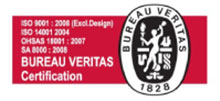Applications
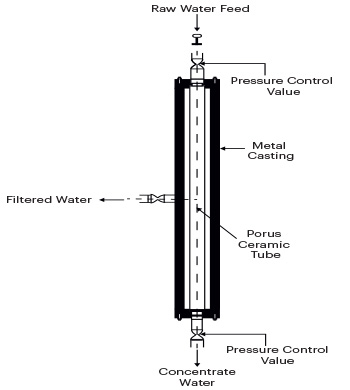
What is Ceramic Membrane?
Ceramic membranes are identified as artificial inorganic membranes, used for liquid filtration. These membranes are made from the materials like alumina, zirconia oxides, titania, silicon carbide, and others. Compared to traditional polymeric membranes, ceramic membranes offer better application and efficiency because of its resistance to aggressive media. Therefore, ceramic membranes allow separations involving acids and strong solvents. These ceramic membranes for water treatment offer other beneficial features too such as thermal stability, chemical stability, low operation cost, long life, and more. Due to this, ceramic membranes are considered the best for obtaining high-quality and high-endurance liquid filtration in industrial environments.
How does ceramic membrane filtration work?
A range of undesirable objects in the water such as suspended solids and particles, oil droplets and emulsions, bacteria, etc. are eliminated from the liquid. When the feedwater enters the ceramic membranes, it separates the permeate and concentrates. The ceramic membranes filtration leaves behind pure and clean fluid, at different levels as per the filtration requirements and pore size. The water filtration ranges are microfiltration, ultrafiltration, nanofiltration, and reverse osmosis. Microfiltration and ultrafiltration are low-pressure filtration ranges in which a semi-permeable membrane eliminates suspended solids, colloids, viruses, etc. and delivers a pure liquid. Nanofiltration and reverse osmosis are sensitive filtration involving partial separation of salts. The pore size of membrane is key to determining the filtration range.
Advanced ceramic membrane Filtration Process
Industrial liquids enter the ceramic membranes in the advanced ceramic membrane filtration process. The filtration process creates pressure, and the feed water passes through the membranes. The permeate moves through the membrane and becomes the filtered liquid:
- The permeate passes through the conventional filtration method to eliminate pollen, coal particles, yeast, sand, hair, etc. Then it passes through the microfiltration method to remove bacteria, black carbon, oil emulsions, fat globules, casein micelles, viruses, asbestos, etc.
- In the ultrafiltration system, the membrane eliminates finer components like synthetic dyes, sugar, more viruses, etc.
- In Nanofiltration and reverse osmosis, aqueous salts, sugars, ions, and more are removed.
Even the concentrate goes under processing for reuse after recycling. In the filtration process system, all the parts have a significant role.
Ultrafiltration for Wastewater treatment
Ceramic Membrane Manufacturers ensure to make high-quality membranes to allow fine ultrafiltration for wastewater treatment. With this kind of fine liquid filtration by the ceramic membrane and not polymeric membranes, the industries can optimize their operation by separating permeate from concentrate at a low cost. In the ultrafiltration method, particles such as bacteria, viruses, black carbon, oil emulsions, fat globules, casein micelles, asbestos, synthetic dyes, sugar, etc. are removed. The diverse properties of ceramic membranes like chemical stability, mechanical stability, thermal properties, corrosion resistance, etc. make them perfect for ultrafiltration purposes. These membranes can be rewashed, used with harsh cleaners, sterilized at high temperatures, etc. This kind of wastewater treatment is necessary for a sustainable future and cleaner water.
Ceramic Membranes Water Filtration Schematic Diagram
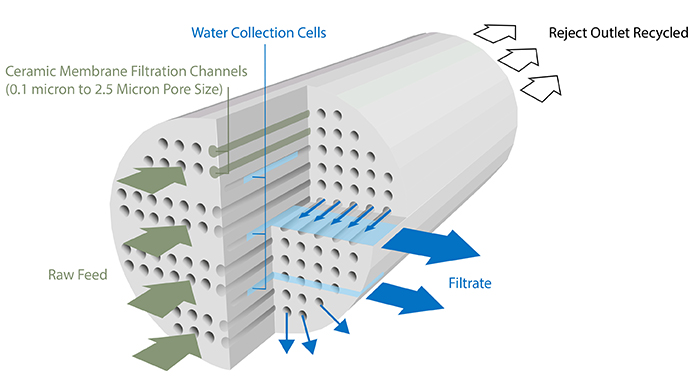
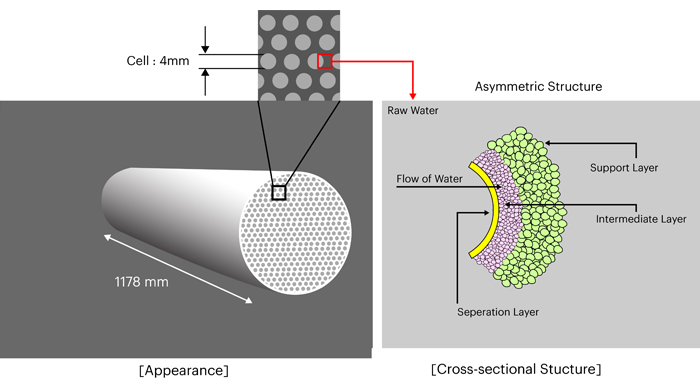
Ceramic Membranes Water Treatment Product Specification
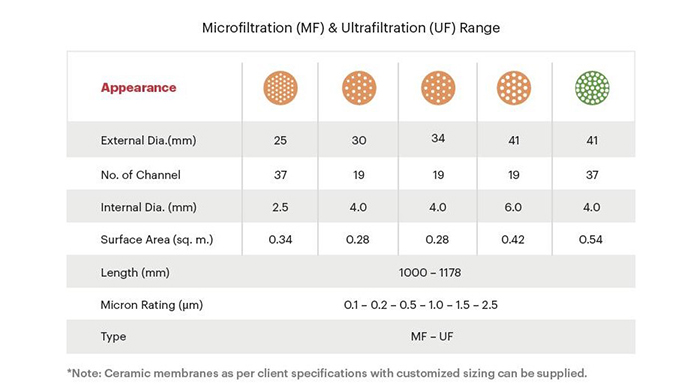
Composition of Ceramic Membranes
Ceramic membranes are crafted from alumina, zirconia oxides, titania, silicon carbide, and other inorganic compounds. Their composition contributes to their durability and resistance to aggressive media, setting them apart from traditional polymeric membranes.
Advantages of Ceramic Membrane for Water Treatment
Chemical and Thermal Stability - Ceramic membranes exhibit high resistance to chemical corrosion and can withstand extreme temperatures, making them suitable for diverse industrial applications.
Longevity and Low Operation Cost - These membranes have a longer lifespan and lower maintenance costs compared to polymeric alternatives, offering economic benefits over time.
Resistance to Aggressive Media - Their robustness allows for the filtration of liquids containing acids and strong solvents, enabling efficient separation in challenging environments.
Working Principle of Ceramic Membrane Filtration
Filtration Process Overview - When feedwater enters ceramic membranes, they separate permeate and concentrate, eliminating suspended solids, particles, oil droplets, bacteria, and other contaminants.
Filtration Ranges - Microfiltration, ultrafiltration, nanofiltration, and reverse osmosis are utilized based on pore size, each catering to specific filtration needs.
Reuse and Recycle of Concentrate
Resource Optimization - Even the concentrate from the filtration process undergoes processing for reuse after recycling, enhancing resource efficiency in industrial operations.


